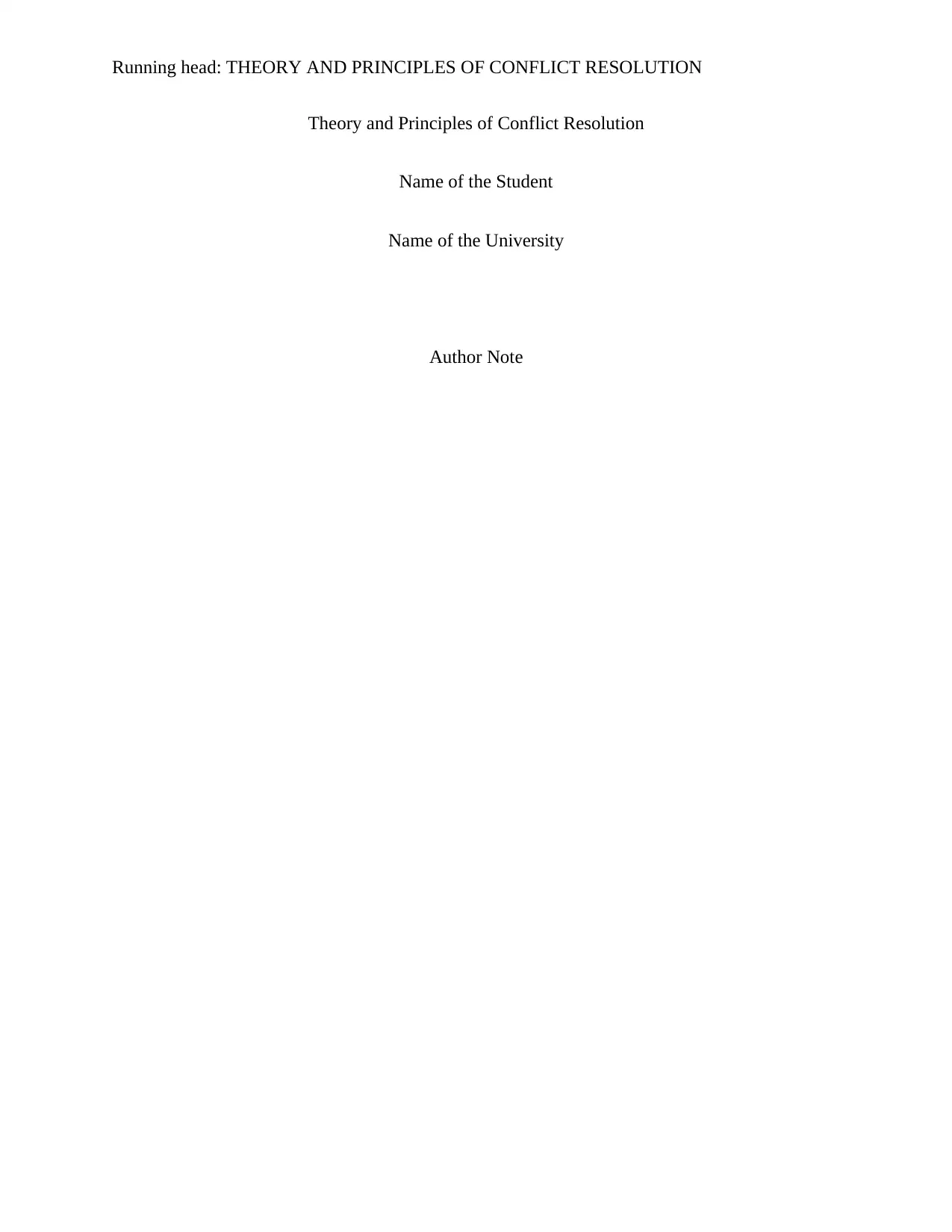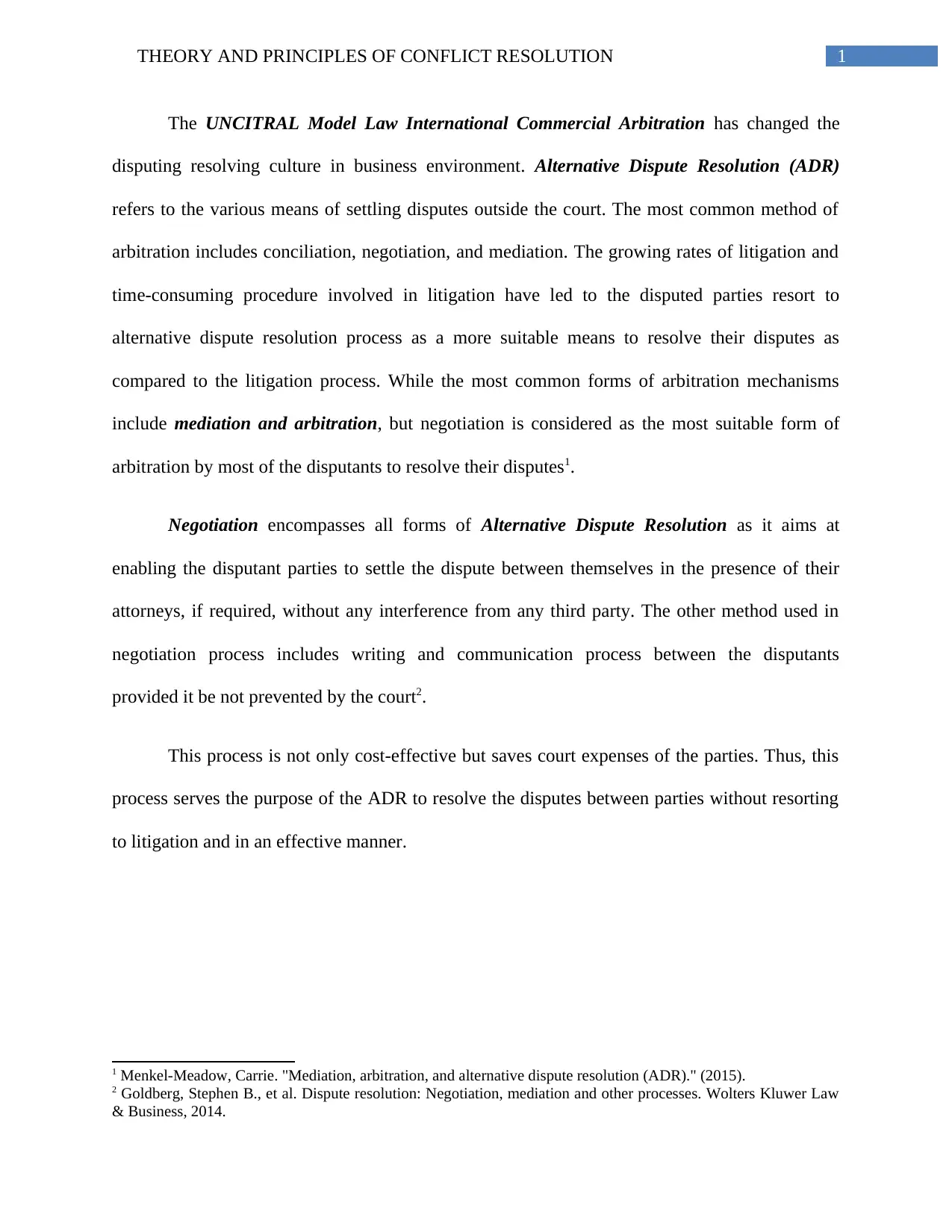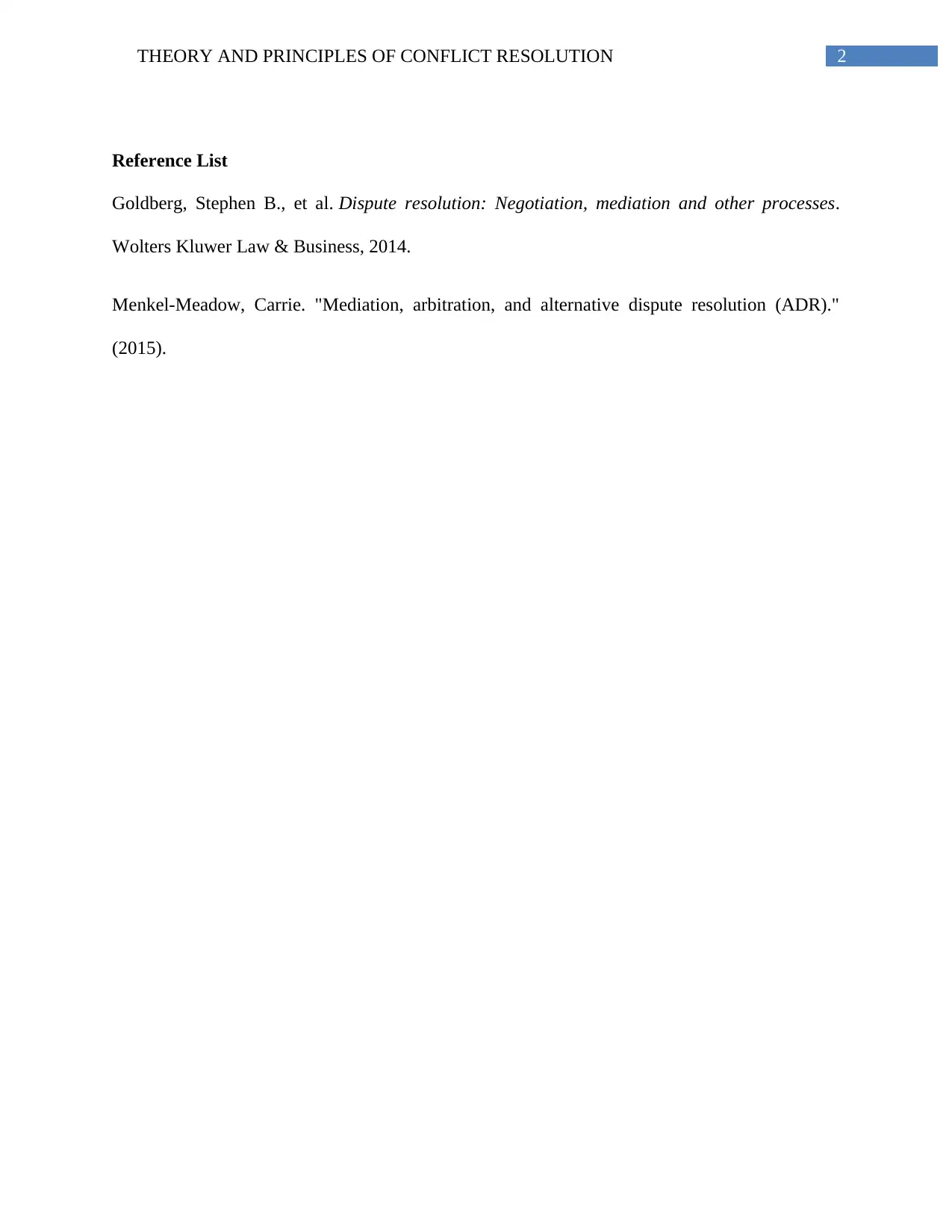Conflict Resolution: Theory and Principles of Arbitration
VerifiedAdded on 2020/04/21
|3
|308
|59
Report
AI Summary
This report delves into the core of conflict resolution, examining the theory and principles underpinning various dispute resolution methods. It highlights the shift from traditional litigation towards Alternative Dispute Resolution (ADR) processes, emphasizing their efficiency and cost-effectiveness. The report focuses on arbitration, mediation, and negotiation, with a particular emphasis on the role of negotiation as a primary means of resolving disputes. It also explores the legal and practical aspects of these methods, including the involvement of attorneys and the use of written communication. The report underscores the benefits of ADR, such as reduced court expenses and a more streamlined process for resolving conflicts. It also provides a reference list including the key sources used in the report.
1 out of 3









![[object Object]](/_next/static/media/star-bottom.7253800d.svg)